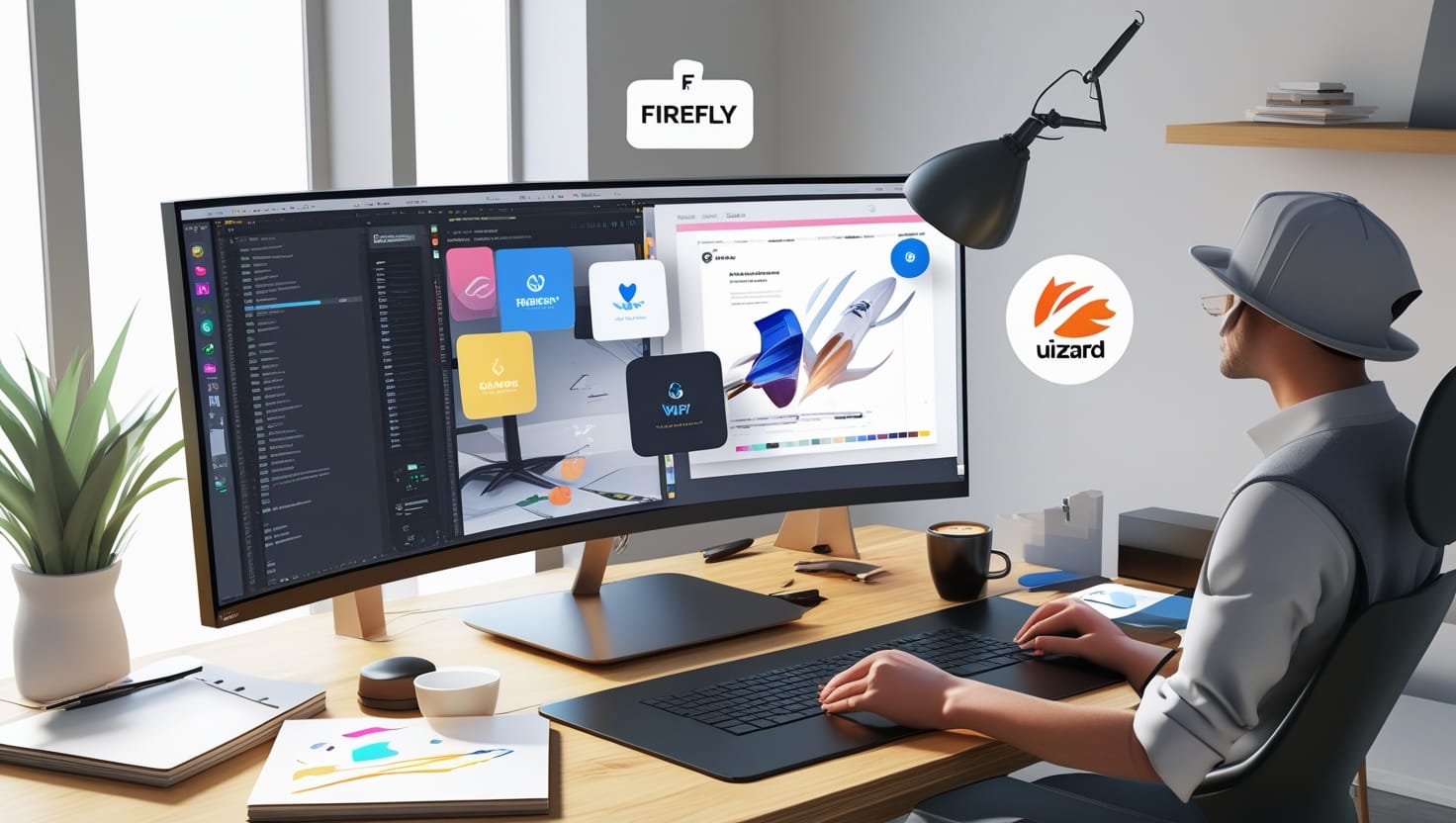The design landscape in 2025 is being transformed by artificial intelligence. From ideation to final execution, AI tools are empowering designers to work more efficiently and creatively. Here are seven cutting-edge AI tools that every designer should consider integrating into their workflow this year.

1. Adobe Firefly
Adobe Firefly has become an essential tool for designers seeking to generate high-quality images and videos from text prompts. With the release of Firefly Image Model 4 and the advanced 4 Ultra, designers can now create hyper-realistic visuals with greater control over styles and camera angles. The platform also supports text-to-video generation and has introduced Firefly Boards, a collaborative moodboarding tool integrated with Creative Cloud apps like Photoshop. Firefly’s commitment to commercial safety ensures that all AI-generated content is legally protected, making it a reliable choice for professionals.
2. Midjourney V7
Midjourney continues to impress with its latest version, V7, offering enhanced image generation capabilities. Designers can create stunning visuals using natural language prompts, with improved realism and detail. The tool is accessible via Discord and the official website, making it convenient for rapid prototyping and concept development. Midjourney’s ability to produce high-quality images quickly has made it a favorite among designers and artists alike.
3. Ideogram 3.0
Ideogram has carved a niche for itself by focusing on generating images with legible text, a feature often lacking in other AI models. The latest version, Ideogram 3.0, offers improved realism and a better understanding of complex text layouts. Designers can leverage this tool to create visuals that require accurate typography, such as posters, advertisements, and social media graphics. Its user-friendly interface and freemium model make it accessible for both professionals and hobbyists.
4. Runway Gen-2
Runway’s Gen-2 model has revolutionized video creation by allowing designers to generate novel videos from text, images, or video clips. This multimodal AI system enables the synthesis of new videos by applying the composition and style of an image or text prompt to the structure of a source video. Designers can use Gen-2 to create engaging video content without the need for extensive editing skills, streamlining the production process.
5. Flux 1.1 Pro
Developed by Black Forest Labs, Flux 1.1 Pro is a text-to-image model that excels in generating high-resolution, hyper-realistic images. With modes like Ultra and Raw, designers can create visuals with up to 4 megapixels, capturing intricate details and candid photography styles. Flux’s suite of editing tools, including inpainting and depth control, offers designers flexibility and precision in their creative projects.
6. Freepik AI Tools
Freepik has expanded its offerings with a range of AI-powered tools designed to enhance the design process. The AI Image Generator allows for the creation of photorealistic images from text prompts, while the AI Video Generator transforms descriptive prompts into short video clips. Additional features like the AI Voice Generator, Retouch, and Upscaler provide designers with comprehensive tools for image editing and enhancement. Freepik’s focus on user-friendly interfaces makes these tools accessible to designers of all skill levels.
7. Canva Magic Studio
Canva’s Magic Studio integrates AI capabilities into its design platform, offering features like Magic Design, Magic Edit, and Magic Write. These tools assist designers in generating layouts, editing images, and crafting compelling copy with ease. Canva’s intuitive interface and collaborative features make it a go-to choice for teams working on branding, marketing materials, and social media content.
Conclusion
The integration of AI into design tools is not just a trend but a transformative shift in the creative industry. These seven tools exemplify how AI can augment the designer’s toolkit, offering new avenues for creativity, efficiency, and innovation. As AI technology continues to evolve, staying informed and adaptable will be key for designers aiming to stay at the forefront of their field.

